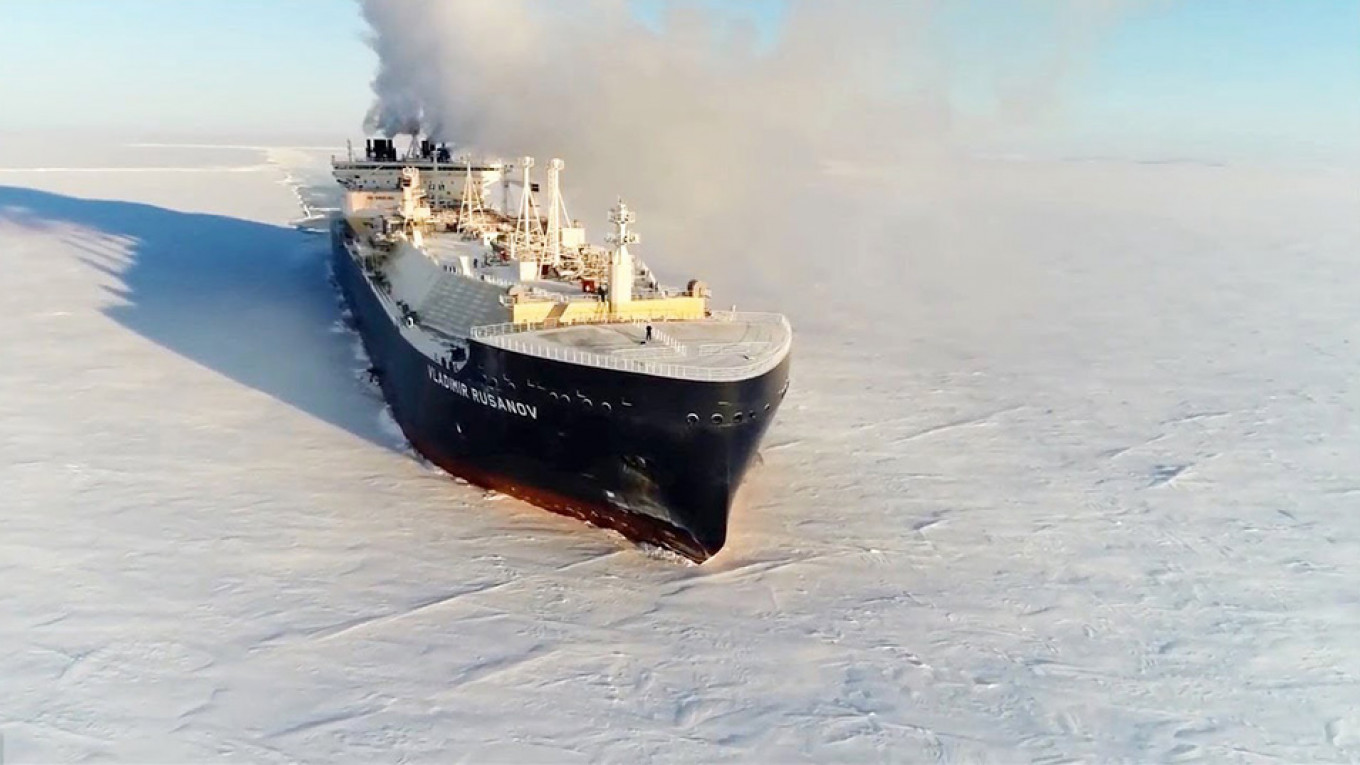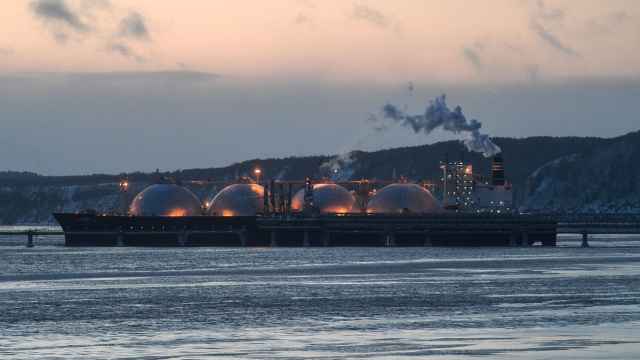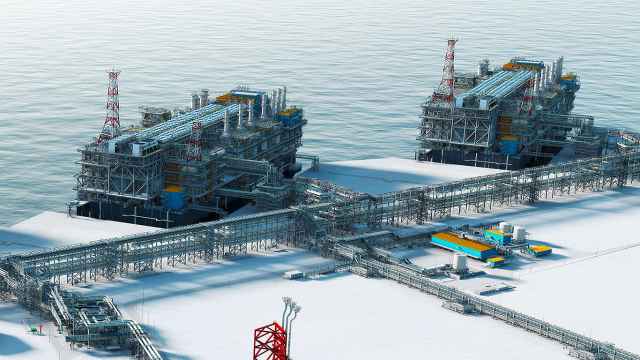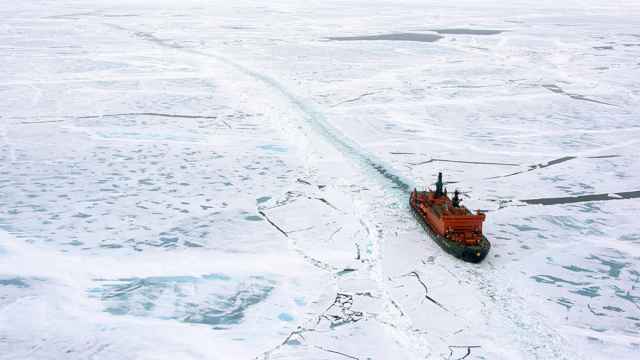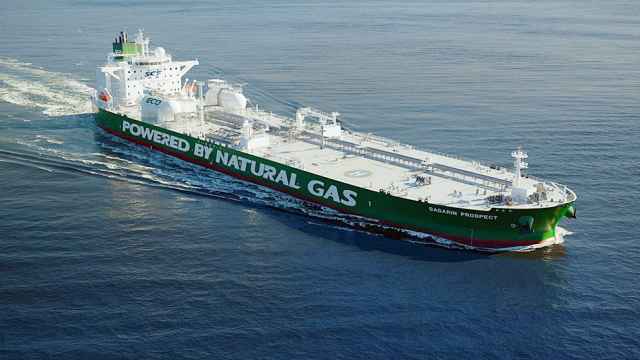At least six top ice-class Arc7 tankers traveled the eastern part of the Northern Sea Route in the last days of September and early October.
It is the most complicated part of the Arctic shipping route. Normally, ice lies thick in the area until late July and the waters start to freeze again in early October.
According to the Northern Sea Route Administration, the Vladimir Vize and Georgy Ushakov were on their way to or from South Korean ports, while the Nikolay Urvantsev, Fedor Litke, Vladimir Rusanov and Vladimir Voronin had courses to and from China.
It constitutes almost half of the current fleet of icebreaking tankers that serve the Yamal LNG project. A total of 13 carriers have been built for the project and the two others will start shuttling to the remote Russian Arctic coast during the year.
Destination Asia
The carriers are built for the Yamal LNG, the project operated by Russian natural gas company Novatek, and all of them shuttle to the Sabetta terminal. Never before have so many of them been in the eastern part of the Northern Sea Route.
The shipments are part of Russia's growing LNG exports to the Asia-Pacific region.
According to Novatek, about 25% of all company's Yamal LNG tankers were exported to Asian buyers in the third quarter of the year. In the same period, a total of 15 shiploads were sent eastward to the region via the Northern Sea Route. And more is to come.
The Asia-Pacific region is a strategic priority, says Lev Feodosev, deputy chairman of Novatek’s management board. A projected reloading terminal in Kamchatka will ultimately have the capacity to handle up to 20 million tons of LNG per year.
"Further development of the navigational efficiency via the NSR combined with the construction of LNG transshipment complexes in Kamchatka and Murmansk will optimize the company’s logistics chain," Feodosov said.
Not all ice-free
Ice maps show that the Northern Sea Route in the first days of October was completely ice-free and that the ice rim has retreated to the north of the 80th parallel across the Russian Arctic.
However, shipping is still not all easy.
Drifting ice floes and icebergs in the area complicate navigation. The researchers on board the Professor Multanovsky vessel experienced major ice troubles in the Laptev Sea in late September and were ultimately forced to sail way further south than it was originally planned.
The research ship was at that time fully surrounded by ice and unable to circumvent the ice floes, the Russian Meteorological Institute says.
The voyage is part of the major Transarktika research expedition managed by the Russian Arctic and Antarctic Research Institute.
More ships on transit voyages
But not only LNG carriers were sailing on the Northern Sea Route in early October.
The Korolev Prospect, a new LNG-fueled oil tanker of the shipping company Sovcomflot, is on its way from China to Murmansk, while the company’s sister ship the Lomonosov Prospect recently set out from the Baltic port of Primorsk with a course for China.
Just a few days earlier, the Gebe Oldendorff crossed the Arctic route on its way from Canadian Milne Inlet to Qingdao, China. The ship is likely to carry iron ore from the Baffinland mine.
Neither the mining company, nor ship owner Oldenfdorff, have responded to an email request.
COSCO in the lead
Chinese shipping company COSCO has for several years been the most active stakeholder in the transit shipments on the Russian Arctic route. General cargo Ship Da Tai was on Oct. 2 sailing through the East Siberian Sea, while the Tian En at the same time was about to complete its voyage from Finland to Tomakomai, Japan. The Tian Qi and Tian Xi have also recently completed transit voyages on the route.
COSCO sent its first two shipments on the NSR in 2013 and in 2018 a total of eight voyages were made.
In the course of the five-year period, a total of 22 trans-Arctic shipments were conducted by the company.
Despite rapid ice melting along the Russian Arctic coast, the transit shipments across the route remain sparse. In 2018, a total of 491,000 tons of cargo were shipped transit on the route, most of it by COSCO’s eight Chinese ships.
A Message from The Moscow Times:
Dear readers,
We are facing unprecedented challenges. Russia's Prosecutor General's Office has designated The Moscow Times as an "undesirable" organization, criminalizing our work and putting our staff at risk of prosecution. This follows our earlier unjust labeling as a "foreign agent."
These actions are direct attempts to silence independent journalism in Russia. The authorities claim our work "discredits the decisions of the Russian leadership." We see things differently: we strive to provide accurate, unbiased reporting on Russia.
We, the journalists of The Moscow Times, refuse to be silenced. But to continue our work, we need your help.
Your support, no matter how small, makes a world of difference. If you can, please support us monthly starting from just $2. It's quick to set up, and every contribution makes a significant impact.
By supporting The Moscow Times, you're defending open, independent journalism in the face of repression. Thank you for standing with us.
Remind me later.


